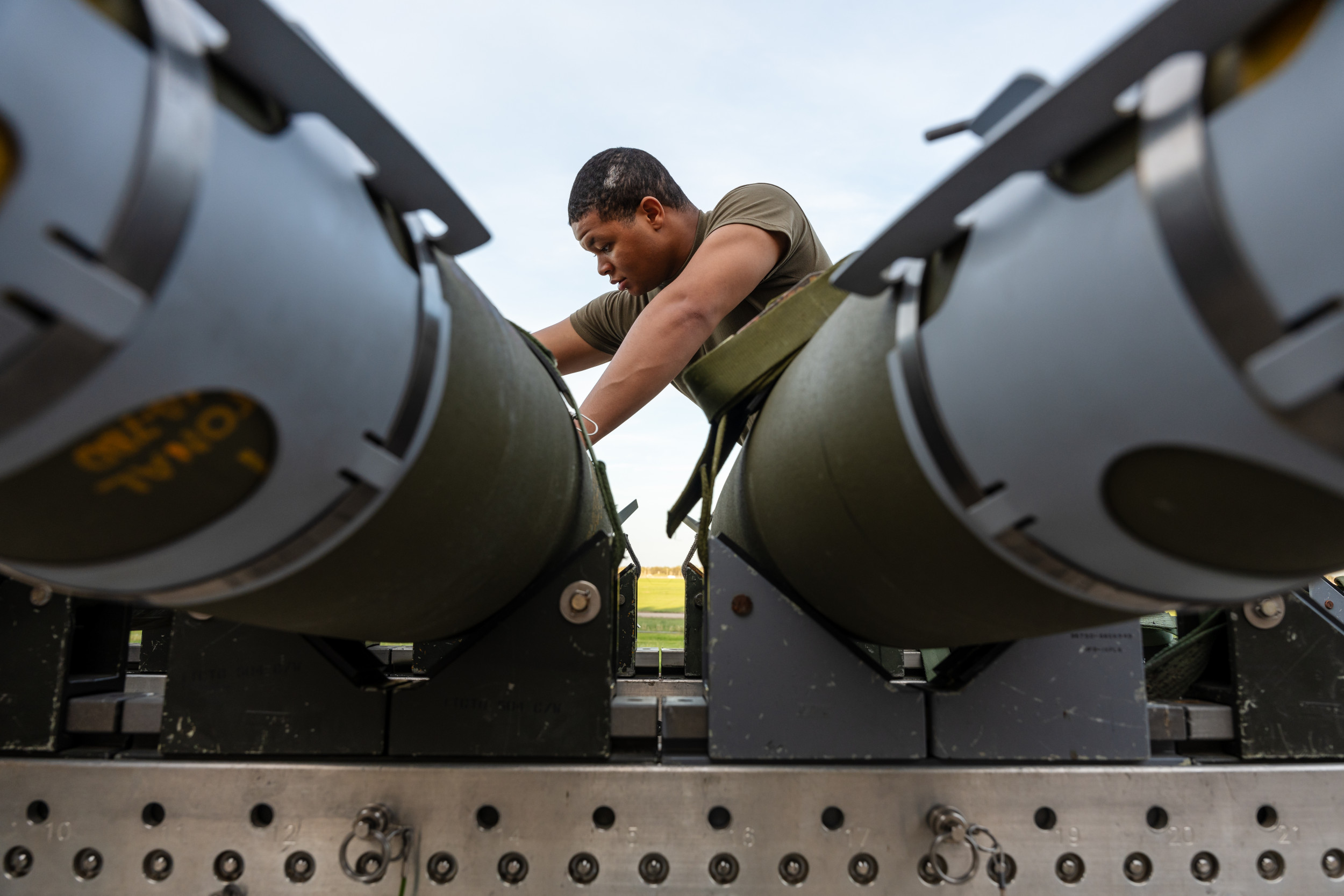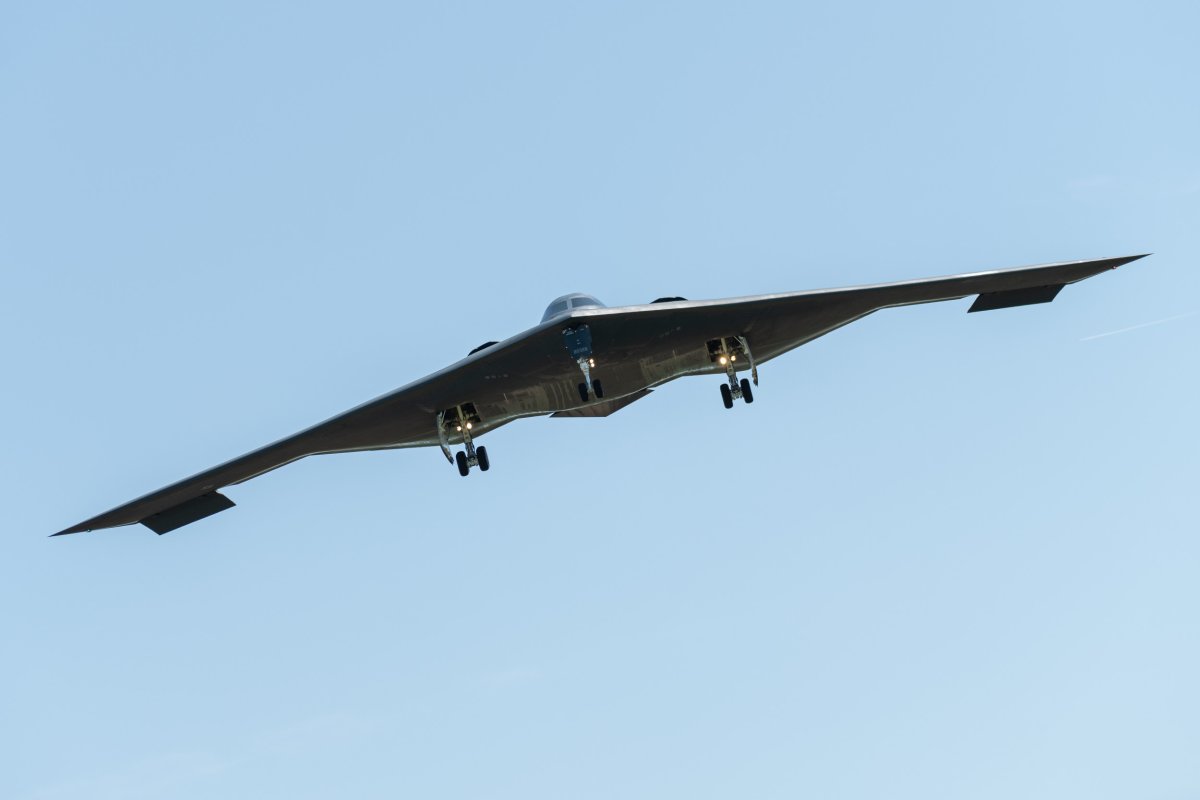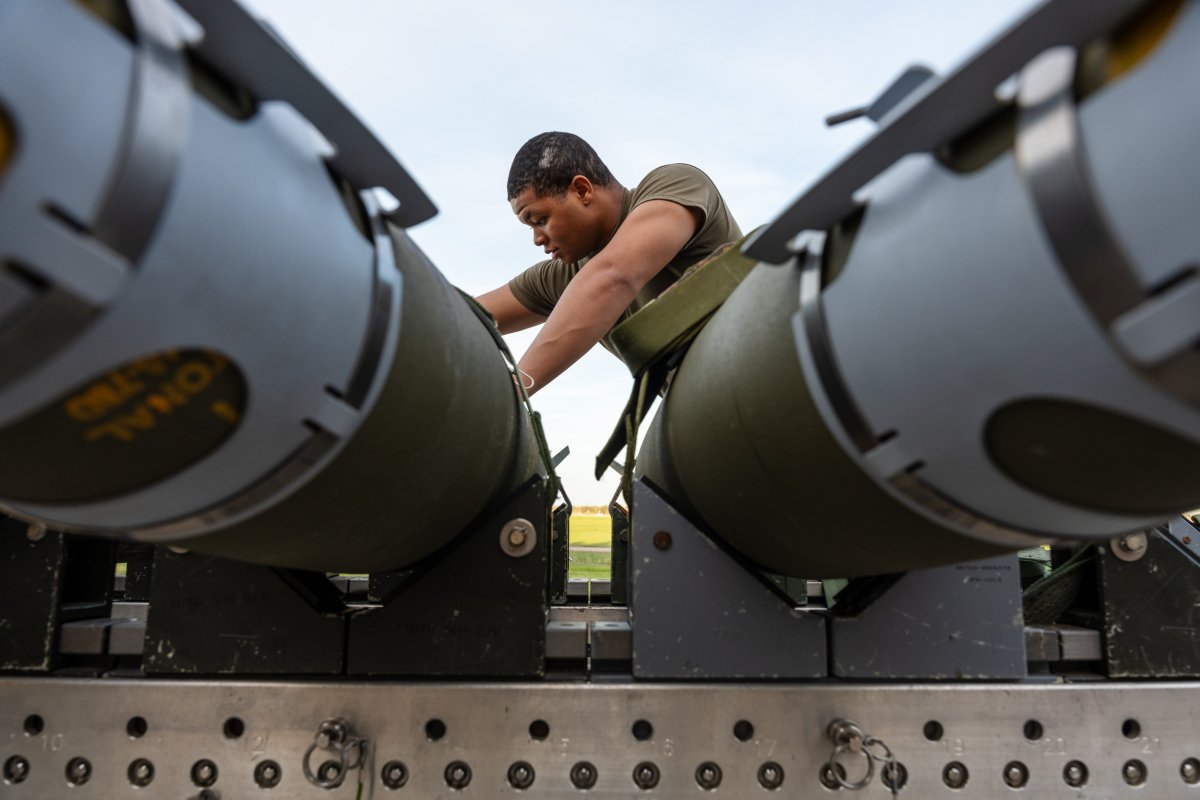
An American stealth bomber recently tested a “game-changing” weapon designed to sink warships amid China’s rapid naval buildup to challenge the United States in the Pacific.
The new weapon—known as Quicksink—is capable of “rapidly and efficiently” sinking maritime targets, the U.S. Air Force Research Laboratory said in a news release on Wednesday.
Newsweek has contacted the Chinese Defense Ministry for comment by email.
Why It Matters
China has the largest navy in the world by hull count, according to the Pentagon, with more than 370 ships and submarines—including two aircraft carriers in active service—enabling Beijing to expand its military reach and presence within and beyond the western Pacific.
Facing China’s growing naval threat, the U.S. has been arming its allies and partners in the Pacific—Australia, Japan and Taiwan—with various anti-ship weapons and deploying the Maritime Strike Tomahawk, the ship-sinking variant of the Tomahawk cruise missile.

Senior Airman Devan Halstead/U.S. Air Force
What To Know
The test—which took place at a Gulf test range near Eglin Air Force Base in northwestern Florida—involved a B-2 stealth bomber and the 500-pound variant of the Quicksink maritime weapon. Official photos indicate the test was conducted in late April.
Quicksink is a U.S. Air Force weapons program aimed at creating “air-delivered, low-cost, surface vessel defeat capability” to enhance Washington’s power projection and maintain freedom of navigation in critical waterways, the U.S. Air Force Research Laboratory said.
The weapon itself is a modified Joint Direct Attack Munition—a family of precision-guided bombs—enhanced with anti-ship capabilities. The 2,000-pound Quicksink variant was successfully tested during an exercise in the Pacific last year, according to the news release.
The new, smaller Quicksink variant is modified from the GBU-38 Joint Direct Attack Munition and is set to expand the B-2 bomber’s targeting capabilities. The bomber is designed to penetrate the “most sophisticated defenses” and can carry up to 40,000 pounds of weapons.
This capability provides a rapid response to maritime threats, the U.S. Air Force Research Laboratory said, significantly bolstering the Air Force’s counter-maritime deterrence and operations. However, it remains unclear whether the weapon has been officially fielded.

Senior Airman Joshua Hastings/U.S. Air Force
Tom Shugart, a former U.S. Navy submariner and an adjunct senior fellow at the Center for a New American Security, wrote on X, formerly Twitter, that he would be “pretty surprised” if the stealth bomber flew within range of Chinese warships to drop the bomb.
“Are we 1,000 percent sure that their air defense systems aren’t going to get a sniff?” he asked. The B-2 bomber is one of the U.S. Air Force’s most valuable assets, with only 19 aircraft in service.
What People Are Saying
General David Allvin, the U.S. Air Force’s chief of staff, wrote on X on Wednesday: “We unleashed a new QUICKSINK weapon, which significantly enhances our ability to strike stationary or moving surface vessels. This is a true game-changer for the [Department of Defense] and is exactly what [President Donald Trump] means by PEACE THROUGH STRENGTH!”
The U.S. Air Force Research Laboratory said on its website: “QUICKSINK is an answer to the need to quickly neutralize menacing maritime threats over vast areas around the world. … QUICKSINK is unique because it can provide new capabilities to existing and future DoD weapons systems, giving combatant commanders and our national leaders new ways to defend against maritime threats.”
What Happens Next
It remains to be seen whether the U.S. Air Force and other service branches will develop entirely new weapons or modify existing armaments to neutralize enemy warships.





